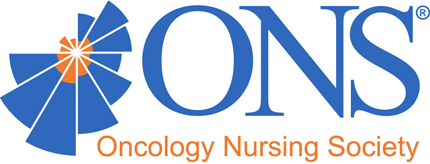Episode 271: Intraventricular and Intrathecal Administration: The Oncology Nurse’s Role
“These patients have very intense regimens of chemotherapy. They’re tired a lot of the time. Between their oral chemotherapy, their IV chemotherapy, their hospitalizations, and then coming in. Everything takes longer than we would like it to for these patients. They are long days to come in for a procedure,” ONS member Rebekah Rabinowitz, RN, BSN, OCN®, neuro-oncology nurse at Emory University Hospital in Atlanta, GA, told Jaime Weimer, MSN, RN, AGCNS-BS, AOCNS®, oncology clinical specialist at ONS, during a discussion about nursing considerations for intraventricular and intrathecal administration. You can earn free NCPD contact hours after listening to this episode and completing the evaluation linked below.
Music Credit: “Fireflies and Stardust” by Kevin MacLeod
Licensed under Creative Commons by Attribution 3.0
Earn 0.5 contact hours of nursing continuing professional development (NCPD), which may be applied to the Oncology Nursing Practice or Treatment ILNA category, by listening to the full recording and completing an evaluation at courses.ons.org by August 4, 2025. The planners and faculty for this episode have no relevant financial relationships with ineligible companies to disclose. ONS is accredited as a provider of nursing continuing professional development by the American Nurses Credentialing Center’s Commission on Accreditation.
Learning outcome: The learner will report an increase in knowledge related to antineoplastic administration via intraventricular and intrathecal routes.
Episode Notes
- Complete this evaluation for free NCPD.
- Oncology Nursing Podcast:
- ONS Voice article: Nurses Can Protect Patients From Neurotoxicity During Lumbar Puncture Procedures
- ONS courses:
- ONS books:
- Leukemia and Lymphoma Society: Lumbar Puncture
To discuss the information in this episode with other oncology nurses, visit the ONS Communities.
To find resources for creating an ONS Podcast Club in your chapter or nursing community, visit the ONS Podcast Library.
To provide feedback or otherwise reach ONS about the podcast, email pubONSVoice@ons.org.
Highlights From Today’s Episode
“We’re not actually giving the chemotherapy intrathecal or intraventricular, but we’re there for the whole process. Handing the chemotherapy and the check off, the whole thing. We’re monitoring them if they’re sedated. We’re making sure they’re getting their antiemetics.” Timestamp (TS) 12:31
“When we’re doing teaching with the patient, we often do bring up that it’s similar to when women get an epidural when they’re having a baby. It’s the same space that we’re using. We’re using a smaller needle, we’re not leaving a catheter in, but pregnant people do it every day. That sort of helps ease a little anxiety when they think about it that way.” TS 15:04
“You have to meet their medical literacy needs. They may not be aware that this administration route even exists.” TS 21:42
“People think that it’s going to be a painful procedure. It’s uncomfortable, people don’t like it, but it’s not horribly painful. If we do see pain, that’s concerning. It’ll likely be an ER visit for imaging.” TS 26:36
Listen on:
Listen on Amazon Music, Listen on Apple Podcasts, Listen on Spotify, Listen on YouTube Music
ONS Podcasts
On-the-go discussions covering a wide array of clinical and leadership topics that you can earn NCPD for.
View All Podcasts
